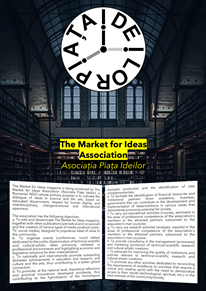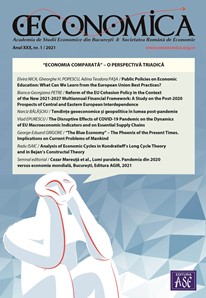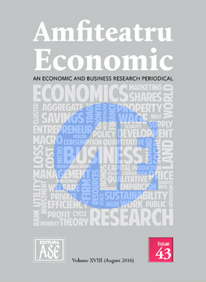
CAPITOL LETTERS (Ep. 4): The Smithsonian Republic of Knowledge An old world in the New World
Patronage is living proof that exceptional public goods can be produced, at least in part, privately. And this goes against the emphatical treatises on economics that theorize and preach the contrary. And when the theory seems far too dry for a journalistic incursion, history comes with (un)sweet(ened) evidence. In the summer of 1829, a certain James Smithson had bitten the dust in Italy, the one from whose glorious gens, that of ancient Rome, Gaius Maecenas descended, diplomat and advisor to the emperor Octavian Augustus and documented as, indeed, the first “patron of the arts”. Smithson, a respected British chemist and mineralogist (after whom zinc carbonate was dubbed Smithsonite), an early member of the Royal Society of London (only a year after graduating from college), had left behind a will with a somehow unusual bequest: should his only nephew die without issue, his fortune would go the way of the United States of America “to found at Washington, under the name of the Smithsonian Institution, an Establishment for the increase and diffusion of knowledge”. Okay, but what’s the catch? Smithson had never set foot in America!
“Any riffraff can make a donation to the United States to have his name immortalized”. This had been one of the attitudes in the American Congress, but a minority one, compared to the penetrating sermon of George Washington’s farewell message, who demanded of America precisely what Smithson had supplied: “the increase and diffusion of knowledge”. Supply and demand, pure economics. Smithson might have known about these words, we don’t know for sure... There are no testimonies about the reasons for his gesture. Only speculations. It could have been the lure of the American tale, of a nation born to explore, to endeavor, to enterprise (values faithfully promoted by the Smithsonian “kin” to this day). Perhaps also the early exposure to the fine world of British academia, where the gift of education was highly prized (just what a natively “industrious”, yet “intellectually” naïve America needed). Or even the life story of the benefactor, a noble but illegitimate scion, denied inheritance by his father (although he eventually enjoyed “old money” from his mother). Give to whom it is due what is due, and money can enlighten minds and fade ancient ranks.
For a decade, the Americans debated whether to accept money from the “bloody British”. However, practical reason prevailed. On August 10, 1846, President J.K. Polk was signing the Smithsonian Institution Act, whose initial “wealth” had crossed the Atlantic with the following inventory: 11 boxes, containing a total of 104,960 “sovereigns” (the British gold coin of the era), 8 shillings and 7 pence, plus the mineral collection, a library, scientific notes and personal artefacts of the donor. The gold alone was worth around $500,000 (20 million in today’s money). According to Forbes analysis, the fiscal year ending in September 2020 found the Smithsonian with revenues of nearly $1.8 billion annually (of which more than $1 billion comes from the federal budget and the rest from private donations and other sources). And while the institution’s financial-accounting net assets were valued at $4.6 billion, the rigorous estimate of the Smithsonian brand’s worth is: immeasurable! In “natural units”, we are talking about 155 million items, in the 20 museums and off-site warehouses. Of which, by the way, at any given moment, barely 1% is, in fact, viewable by visitors.
But how did it get from 11 boxes to almost a small town (over 1 million square meters), filled with the wonders and frolics of art and science? First, “thanks to America”, the nation that tirelessly explains to each and every one of its citizens that the American dream exists, only for those who don’t go to (beauty) sleep to live it. Second, “thanks to America”, the nation with a long memory of an otherwise short past (not a short memory of a long past), which keeps up manufacturing (and wisely exporting) the future. Third, “thanks to America”, the nation skilled at collecting global pop-culture royalties (Holly.../Insta.../Mc.../Cola) to reinvest them back home in fine education and high culture. And counting (the reasons why the Smithsonian wisdom emporium is so unique and unrepeatable). It is to be viewed not as an “Adoration of the Magi”, but with a critical and creative eye. That is, it can be scrutinized with its own tools. The Smithsonian is not for second-hand thoughts, but for personal immersion in the museums, libraries and research centers of the conclave. To find what there? Factories of prefab answers? Not a bit! Workshops for our own crafty questions!
(July 25, 2022 – Washington, D.C.)
Photo source: author’s snapshot at the Smithsonian’s National Portrait Gallery, Washington, D.C.
Note:
CAPITOL LETTERS is a series of articles occasioned by the author’s presence in Washington, D.C. as Romanian Cultural Institute Fellow, studying industrial revolutions’ imprint on the cultural sector.
The opinions hereby expressed by the author remain his exclusive responsibility and do not engage, in any manner or measure, the organizations to which he is affiliated or with which he collaborates.








